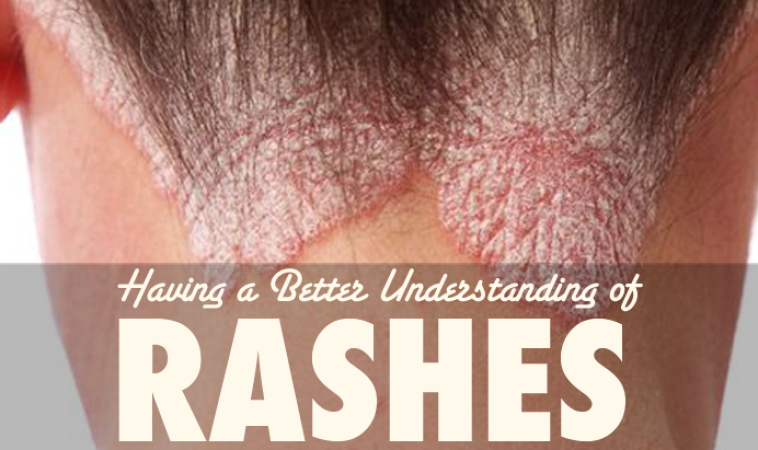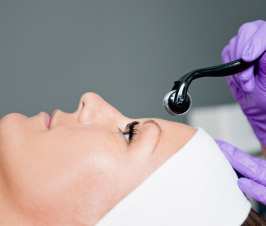First, let me state that I am not a dermatologist. I am a primary care doctor (PCP) with a specific interest in dermatology. Through this passion, and learning from a few wonderful dermatologists and dermatology-focused doctors, I’ve become a Naturopathic Primary Care doctor with a focus in dermatology. The reality is, in primary care, we cannot escape dermatology; 25% of our appointments involve skin concerns. The skin is our largest organ, and our internal health or disease easily manifests on this gateway between our internal and external environment. Now, because of this, I know many pediatricians and general medicine doctors that cringe when they see “rash” on their schedule. To our defense, rashes look very similar, and require very systematic investigation if the diagnosis is not readily apparent in office. With that said, I admittedly cringe a little each time a patient shares with me in office, “I was diagnosed with a rash by my doctor”, often followed by “x cream was prescribed” and they don’t know why. Now, they wouldn’t be sitting in my office for a second opinion if x or y therapy had worked, or more specifically, they had cured the “rash”. This article is not intended to take the place of a doctor’s visit. Rather, my hope is to give readers some tangible information through this series that will empower in this often complex and scary topic (even scary to your doctor, despite their professional game face).
A non-specific diagnosis
I have to start by calling out the elephant in the room…”rash” is a non-specific diagnosis. Doctors may give the skin eruption the label of a rash while they investigate the actual diagnosis, but rarely is it fitting to be a final diagnosis. Because it is not specific, if you’ve arrived at a final diagnosis of “rash”, there is not an informed targeted therapy. What this means is, if we don’t know what we are treating, how do we know how to treat it? Maybe you get an over the counter steroid, anti-fungal, anti-bacterial or a non-specific cream or pill (natural or conventional). Similarly, if you’ve left an office with the diagnosis “rash”, you may be getting a natural or pharmaceutical best guess treatment.
Don’t guess!
Don’t guess! My biggest take home to doctors, patients, and the public when I teach is that in order to be the most successful with long-term treatment (and fingers crossed, cure), you have to know what you are treating. Maybe you already have a skin condition, and you already have that diagnosis. That is often point “Z”. We have a diagnosis, but what caused it? That cause can be different for a lot of the chronic rashes such as eczema, psoriasis, etc… Further investigation may be necessary to figure out the domino effect; “X” to”Y” that subsequently led to “Z”. Other rashes may be very straight forward, such as a rash caused by a virus or bacterial infection where we have a clearer understanding of that pattern.
Now back to, “Don’t guess”. I will literally tell patients, “My philosophy is to not throw stuff at the wall and see what sticks”. Admittedly, “stuff” may be replaced with a different noun, depending on the person sitting in front of me. Some techniques, you may be able to use in home; others may require more specialized tools that most would not have lying around. Usually we start with eye-balling that rash with our naked eye. If you are moments away from DrGoogle, it will want you to know if the rash is raised or flat. This is where the Oblique Lighting Technique comes in. Just like it sounds, you shine a light from above and off to the side of the lesion or rash. If it’s raised, it will often create a shadow. Turning down the lights, aka Subdued Lighting can also be really useful. Bright light may indeed shed more light on our focus, but it can also wash out the details. By turning down the lights, we are able to see more contrast between the healthy skin and the lesion. Next, feel the lesion. I highly suggest you wash your hands before and after, in case it is infectious. The texture can tell a lot about the rash. Does it have a sandpaper texture? That combined with the way it looks and feels (itch, scratch, itch) may lead one down the road to eczema as the culprit. If it is wet or seeping, there is no need to touch, rather it is highly recommended that you proceed straight to a doctor who can take a culture, or sample, and send that out to a lab for evaluation.
A technical evaluation
Now, moving past techniques to more technical evaluation using tools. Our starting tool in office goes by multiple names, one of which is the dermascope; read microscope for skin. This fancy gadget shines light through it, magnifies and focuses, and many have a measuring tool in them. I’m sure it won’t be surprising that skin lesions often look drastically different under a specialized microscope. In your home, a magnifying glass won’t quite be the same, but will help you get you a little closer to what we are able to see with our fancy office toy. Next, a scrape of skin can be taken and looked at under the microscope; often solutions are added to help us see if there are appearances of a range of possible infectious sources such as scabies, yeast, bacteria, and more. A Wood’s lamp is another tool that can be incredibly useful. This tool is UV long-wave “black” light that allows us to see pigment changes and fluorescence. Different colors of fluorescence are associated with different disease processes/infectious organisms. You may still have a black light sitting in your garage, right next to your lava lamp and shaggy carpet…no judgment from my end. That black light is not quite the same, but may still reveal fluorescence outside of the normal range. The last step is a biopsy. Rarely is this a start point in office for me. This is also not something you will be doing in home, I hope.
Skin stuff can easily be ignored until it becomes a problem; or it hits the scary, painful, or annoying threshold. If you have an undiagnosed rash that has been going on for more than a week, it may be time to have a healthcare provider check that out with their specialty tools. Early diagnosis and treatment of skin issues can save a lot of frustration and confusion on both your side, and your doctor’s side (despite their professional game face that they wear). Stay tuned for Part 2: Common infectious “rashes” in kids.
 Dr. MaryK M. Geyer is a licensed Naturopathic physician, educator, veteran, mother, and committed humanitarian. She earned her doctorate in Naturopathic Medicine from Southwest College of Naturopathic Medicine, where she focused her training on working with underserved populations. Prior to medical school, she graduated with Honors from the State University of New York at New Paltz with a Bachelor of Science degree in Organismal/Environmental Biology. She completed a post-graduate preceptorship focused in obstetrics and pediatrics with Dr. Farra Swan, ND before undergoing her family practice residency at Southwest Naturopathic Medical Center.
Dr. MaryK M. Geyer is a licensed Naturopathic physician, educator, veteran, mother, and committed humanitarian. She earned her doctorate in Naturopathic Medicine from Southwest College of Naturopathic Medicine, where she focused her training on working with underserved populations. Prior to medical school, she graduated with Honors from the State University of New York at New Paltz with a Bachelor of Science degree in Organismal/Environmental Biology. She completed a post-graduate preceptorship focused in obstetrics and pediatrics with Dr. Farra Swan, ND before undergoing her family practice residency at Southwest Naturopathic Medical Center.
Dr. Geyer has received additional training in Women’s Medicine, Pediatrics, Dermatology, Minor Surgery, and Evidence Based Medicine. Dr. Geyer previously served as the Associate Dean of Naturopathic Medicine and Residency Director at National College of Natural Medicine and was a co-founder and previous Executive Direct of Naturopaths Without Borders, leading over 20 international medical trips to Mexico and Haiti. She has over 15 years of teaching experience, including teaching dermatology and minor surgery at two of the accredited Naturopathic Medical schools, and continues to lecture and write for the public and other health professionals. Dr. Geyer currently provides comprehensive primary care, including naturopathic dermatology, to her patients at Southwest Naturopathic Medical Center in Tempe, Arizona.

















